One of the most shocking aspects of buying a home can be exploring the incredible cost of custom window treatments. I came in to help my newlyweds, Chelsea and Scott, with the kitchen window of their first home. They wanted to keep the light, but lose the nosy neighbor next door. Our solution:a modern, custom-made cornice. With a budget of $200, we designed and built a simple frame in half a day.
 From:Laurie March
From:Laurie March
Measure the window opening you want to cover. Your facade will be slightly wider than the window. Add at least 2" width to make it larger than your window frame.
Measurements will vary depending on the width of your window. The window we are working with was 52" wide, so we cut each of our 54" long horizontal pieces to cover the window trim. Because we wanted to let a lot of light into the space, we measured and cut two vertical frame pieces each at 24". We chose not to cover the entire window to allow more light into the kitchen. The area we covered blocks the view of the neighboring line.

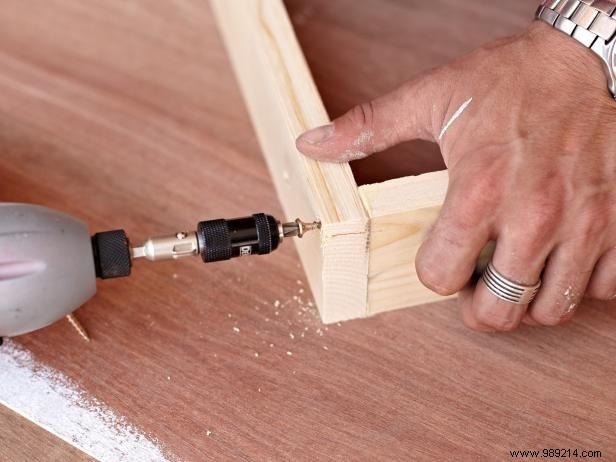 From:Laurie March From:Laurie March
From:Laurie March From:Laurie March
Place the 54" pieces outside the 24" pieces, making a rectangle. Before you screw the two boards together, apply wood glue to the joint. This helps all woodworking projects stay together longer.
Using a power drill, screw the frame pieces into a rectangle using 1-1/4” wood screws. Two screws for each of the four corners held our project together nicely.
Pro Tip:Did you know that a 1x3 plate is not actually 1" x 3" in dimension? When the boards are first cut they are 1" x 3", but when we get them they are 3/4" x 2-1/2".
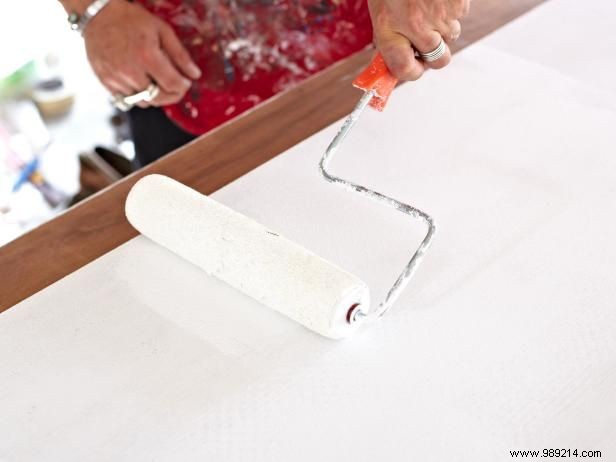 From:Laurie March
From:Laurie March Apply a thin coat of primer to the rectangular frame, and the front and edges of the piece of plywood you are attaching. This is to let the primer and wood glue dry before continuing. An inside secret I use on smaller projects is making wood cutouts at a Big Box home improvement store. We had our plywood cut to size at 54" by 25-1/2".
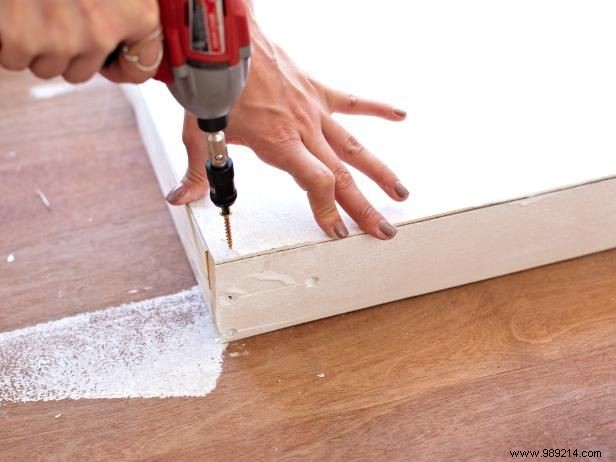 From:Laurie March
From:Laurie March After applying wood glue to the face of the frame, carefully lay the plywood on top of your rectangle. Drill pilot holes, if desired. Then attach the plywood to the frame with screws and apply putty to fill in the holes.
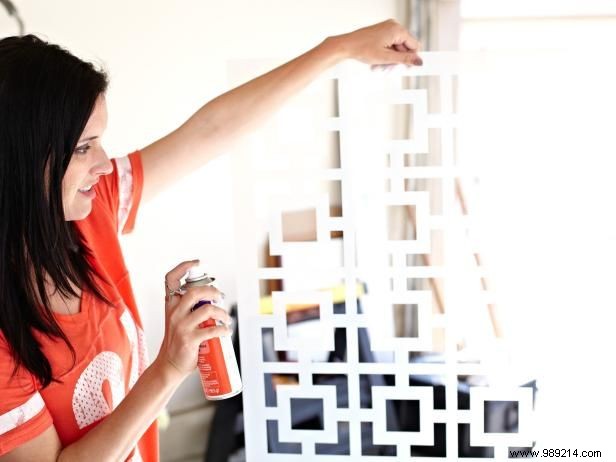 From:Laurie March
From:Laurie March
Before the template, decide where you want the template to start and stop. The symmetry is very pleasing to the eye..
If the background color is not completely dry, use a hair dryer. Hold it at least 8" away from the surface over medium heat and move around a lot so you don't get the paint too hot as it dries. Don't apply stencils until the background color is completely dry. We cheated a bit. We used primer as our background color, which contrasts wonderfully with the all-gloss charcoal gray template color.
Apply the repositionable spray mount to the back of your stencil and lay it flat on your dry painted surface. The spray holder will help the stencil stay in place while you paint. Press down firmly with your hand or a dust-free cloth to make sure the paint doesn't slide behind the stencil. Do not skip this step.
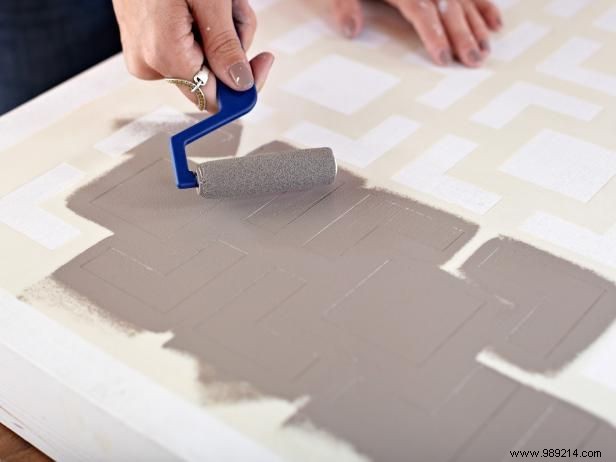
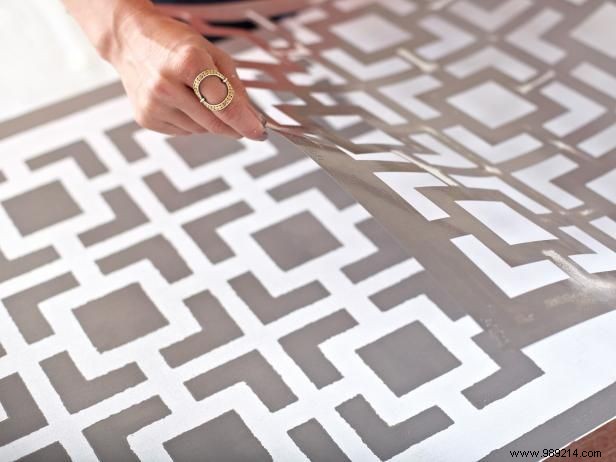 From:Laurie March From:Laurie March
From:Laurie March From:Laurie March
A roller works great for this, but after you dip it into your paint, remove all of the excess paint on a clean paper towel. The first coat of a stencil should be very light and the brush almost dry of paint. You can always follow up with another light coat as often as you like, but too much paint is surely the villain of any good stencil project.
Some stencils, like this one, need to be repeated, so carefully move the stencil around and swirl more paint to complete the pattern. Look for a template that has markings to guide you for easy repositioning.
 From:Laurie March
From:Laurie March This frame is quite light, so we were able to mount it to our window frame with two three-hole L-brackets with ease.